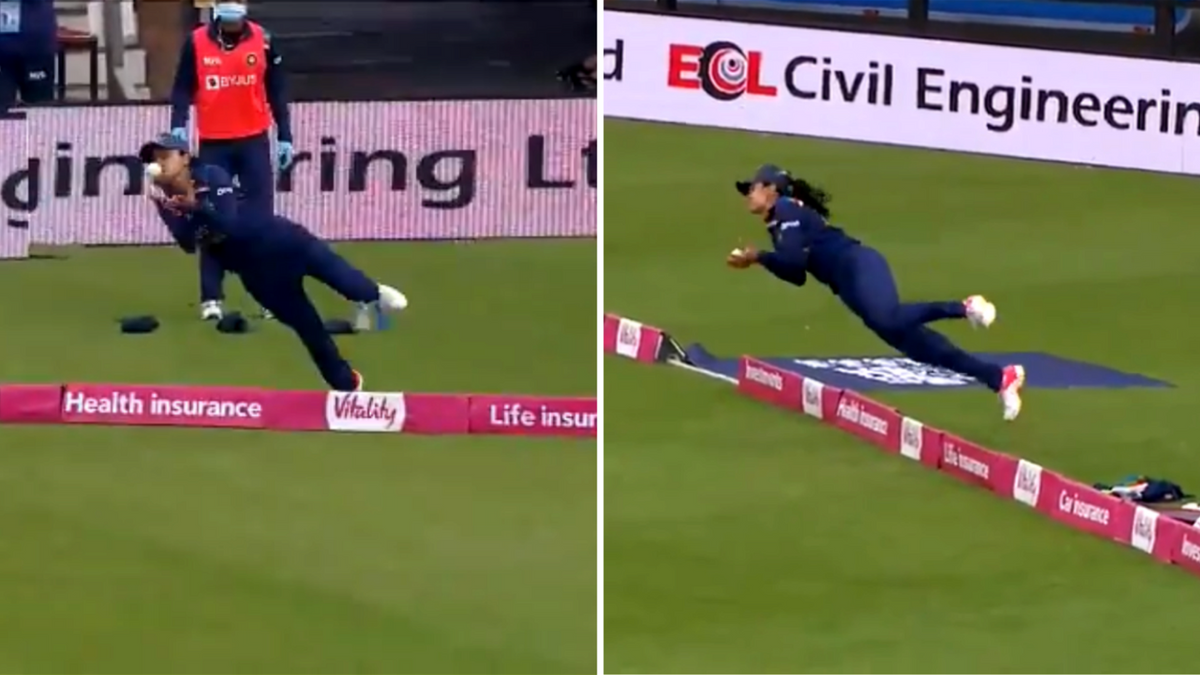
While England Women emerged triumphant in the first T20I against India Women, the moment of the game undoubtedly belonged to one of the tourists, with Harleen Deol completing a spectacular, juggling boundary catch to bring the innings of Amy Jones to an end.
However, there was much debate over whether the dismissal should have stood. Deol first caught the ball before landing inside the field of play, released the ball back into the air before momentum carried her beyond the boundary rope, and then leapt from outside of the field of play to catch the ball before landing back inside the boundary.
A fantastic piece of fielding 👏
We finish our innings on 177/7
Scorecard & Videos: https://t.co/oG3JwmemFp#ENGvIND pic.twitter.com/62hFjTsULJ
— England Cricket (@englandcricket) July 9, 2021
The confusion came because Deol’s final touch with the ground before completing the catch came outside the field of play. However, close inspection of the laws of cricket demonstrates why Jones was given out.
Law 33.2.1 states: “A catch will be fair only if, in every case either the ball, at any time or any fielder in contact with the ball, is not grounded beyond the boundary before the catch is completed.”
Important here is what it means to be “grounded beyond the boundary”. Law 19.5.2 states: “A fielder who is not in contact with the ground is considered to be grounded beyond the boundary if his/her final contact with the ground, before his/her first contact with the ball after it has been delivered by the bowler, was not entirely within the boundary.”
So Deol is not considered “grounded beyond the boundary” because her final contact with the ground before her first contact with the ball was entirely within the boundary. While her final contact with the ground before her next contact with the ball came outside the boundary, this is not relevant under the laws. In short, as long as a fielder starts within the field of play before touching the ball first, ends up within the field of play when completing the catch, and is never in contact with the boundary or the ground beyond the boundary at the same time as being in contact with the ball, a catch is legal.
While some stills suggest Deol was in contact with the ball and the ground beyond the boundary simultaneously, replays show this was not the case.
A change to the laws in 2013 clarified some of the potential controversies over similar juggling boundary catches, but there are some who feel that more tweaks are needed. Notably, Glenn Maxwell objected to the current rule in September 2015, having benefited from the current wording to claim a catch in an ODI against England.
“I don’t think it makes a whole lot of sense,” Maxwell said at the time. “I think you should have to get back into the boundary. I think if you look at the basketball rule. You have to jump from inside to throw it back in, you can’t jump up in the air and catch it on the way back in. You’ve got to make sure your feet have landed inside the court and I think it should be the same in cricket. But while we’re taking catches on our side it doesn’t really bother me, but I know if I was a batsman I’d be pretty upset if that was the dismissal. You’ve just got to play the rules you’re given.”
The Maxwell catch is at one minute, 17 seconds in the below video:








